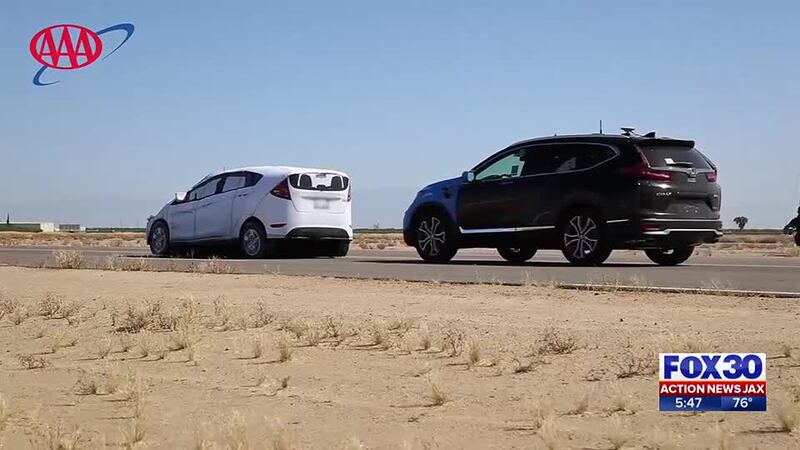WASHINGTON — The U.S. government wants vehicle companies to include automatic emergency braking on all vehicles. Transportation leaders believe this will save many lives. But some safety groups are showing us why they have concerns that the new rules don’t go far enough. Right now, most new passenger vehicles include the emergency braking technology. But soon it could be required and there’s some debate over how well it works.
>>> STREAM ACTION NEWS JAX LIVE <<<
Amy Cohen has suffered the ultimate loss. In 2013, her son Sammy was walking to soccer practice and was hit and killed. “His death was preventable, and he should be turning 23 years old this year,” said Cohen. She believes that Automatic Emergency Braking or AEB could’ve prevented the death of her son. “There is no reason that it shouldn’t be standard in all vehicles,” she said.
Leaders at the Department of Transportation in Washington, D.C. agree. Deputy Secretary Polly Trottenberg says that proposed rulemaking is “urgently needed.” Earlier this year, they announced proposing a rule that would require automatic emergency braking on passenger cars and light trucks starting in three to four years. The technology is designed so that a car avoids hitting another vehicle or a pedestrian if the driver hasn’t taken any action at certain speeds. “We believe these standards will maximize the lifesaving potential of these technologies,” said Trottenberg.
But some question how reliable the technology really is. Last year, Atlanta drivers told us their automatic braking technology kicked in… when it shouldn’t have. Despite sounding the alarm, there’s no fix yet for some cars and the National Highway Traffic Safety Administration is investigating.
[DOWNLOAD: Free Action News Jax app for alerts as news breaks]
AAA is also raising safety questions about using the technology when people need it most. They tested AEB on vehicles in many different scenarios. They found at 30 miles per hour, AEB prevented 85% of the rear-end crashes. Then, they tested at 40-miles per hour and say the technology only prevented 30% of the crashes.
Their bigger concern is that the emergency braking failed to avoid a T-bone crash 100% of the time. They also found that every time they had a car turn left at an intersection, it wouldn’t stop or alert the driver about a potential crash. Greg Brannon is AAA’s Director of Automotive Engineering and he’s studied this issue extensively. He told Washington News Bureau reporter Blair Miller they applaud the proposal for more automatic emergency braking but that it needs to work better at intersections. “We found that the systems don’t work in that situation at all,” said Brannon. Those are the scenarios where people are dying, and in the greatest numbers with front-end collisions,” he said.
[SIGN UP: Action News Jax Daily Headlines Newsletter]
We asked officials at the D.O.T about that and if they will prompt automakers to do even more to make sure the technology works when it’s supposed to. They responded saying: “The agency is closely monitoring the development of automatic braking to mitigate any risk of crashes beyond the changes they’re already proposing.”
Click here to download the free Action News Jax news and weather apps, click here to download the Action News Jax Now app for your smart TV and click here to stream Action News Jax live.







